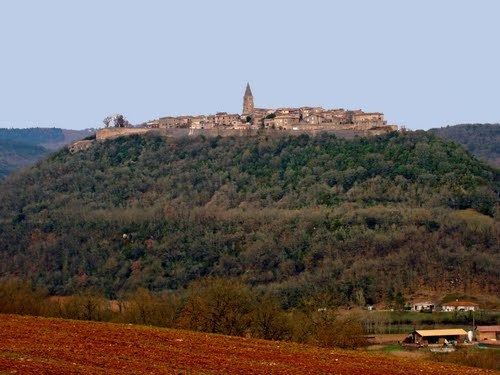Country France Department Tarn Canton Castelnau-de-Montmiral Area 39.2 km² Local time Thursday 7:49 PM | Region Occitanie Arrondissement Albi Intercommunality Vère Grésigne Population 495 (1999) | |
 | ||
Weather 19°C, Wind SE at 19 km/h, 37% Humidity | ||
Puycelsi (formerly Puycelci) is a commune in the Tarn department in southern France.
Contents
Map of 81140 Puycelci, France
It is a member of the Les Plus Beaux Villages de France ("The Most Beautiful Villages of France") association. It has 463 inhabitants in 2013.
Geography
The village lies in the western part of the commune, high above the right bank of the Vère, which flows northwestward through the commune.
History
The name of "Puycelci", or "Puycelsi" comes from the Celtic "Celto Dun", a wooden fortress built on a hill, or oppidum, later transformed into "Podium Celsium" by the Romans.
The village itself was founded in the 10th century by Benedictine Monks from the Aurillac Abbey, in a location close to the ancient prehistoric site.
The first castle was dismantled after the Treaty of Meaux-Paris, in 1229, but the village remained a stronghold. Though it was besieged several times in the 13th and 14th centuries, it was reportedly never taken by force.
Until the First World War, the village was quite prosperous, with a population of nearly 2,000 in 1830. Almost abandoned in the 1950s, it has since been restored by its inhabitants and is now listed among the “Most Beautiful Villages of France”.
